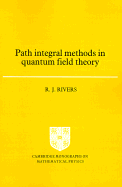Basic ideas on the space-time structure of deeply inelastic scattering (DIS), symbolized in Figs. 2.2 and 2.5, led us to the parton model in Sec. 2.4. However, as we saw in Ch. 5, the leading regions can be more general than those that give the parton model. Indeed, the properties needed for the literal truth of the parton model are violated in any QFT that needs renormalization or that is a gauge theory, or both, like QCD.
Even so, the ideas that led to the parton model (the distance scales, time dilation and Lorentz contraction) are such basic properties that one should expect the parton model to be some kind of approximation to real QCD.
Because of the complications inherent to a sound treatment in QCD, it is useful to build up methodologies step by step. In this chapter, we treat situations where the parton model is correct, which happens in suitable model field theories. For these we will construct a strict field-theoretic implementation of the parton model.
One key result will be operator definitions of the parton distribution functions (parton densities or pdfs). Another result will be light-front quantization, whereby a probability interpretation of a pdf can be completely justified, in those model theories where the parton model is exact.
Field theory formulation of parton model
DIS concerns electron scattering off a hadronic target, e + P → e + X, to lowest order in electromagnetism, with kinematic variables and structure functions defined in Sec. 2.3.
